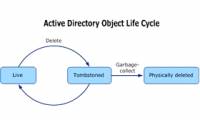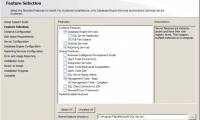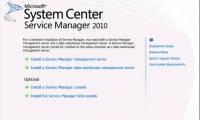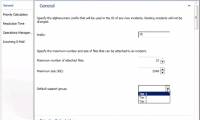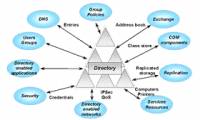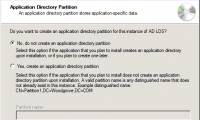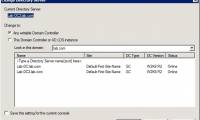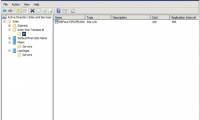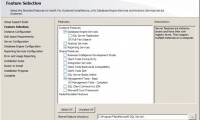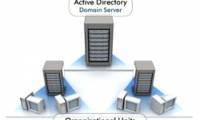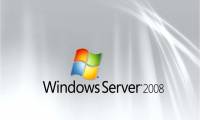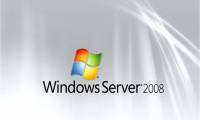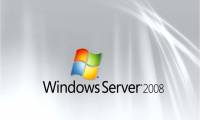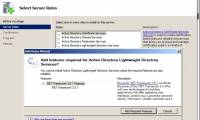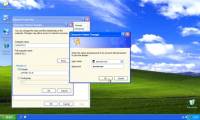
before installing exchange 2007 you need to learn some steps to take to prepare an active directory environment to receive exchange 2007.

in part one, we went over the first four steps to take to prepare the active directory schema to receive exchange 2007.

what is active directory? active directory is a copyrighted directory service by microsoft, which is an integral part of windows architecture.

it can be said that one of the most 'problematic' issues in managing and working with active directory is mistakenly deleting data or objects accidentally or incorrectly handled by

in the previous article, i showed you how to recover deleted components in active directory, which are related to the lifecycle properties of tombstone objects. technically this

in this article, i will show you how to install the basic service desk services as well as the data warehouse components of this product.

in part 3 of this series, i will show you how to use and configure service manager.

in this article, we will show you the steps to configure service manager before starting to use the product.

in essence, active directory is a 'massive' database based on a hierarchical architecture, which contains complete information about network systems such as computers, servers,

in this part 5, we will show you the logical structure of the ad lds instance and the role of that structure in the replication process.

in this next article, i will continue the discussion by showing you how to create a site structure used for larger ad lds deployments.

in the final part of this series, we will introduce you to site linking objects, the process of creating replicas between sites and some issues to consider in disaster recovery.

in this series, i will show you some of the features of service manger and will provide a detailed description of the requirements for the system.

microsoft active directory provides a centralized solution, managing and storing network resource information across the entire domain. in addition, active directory using domain

in this article series, i will show you how and how to use the lightweight directory service services.

in this second part we will continue the introduction of ad lds service by exploring some of the usable technologies and how to deploy ad lds services.

in this article, i will show you the procedure for creating an appropriate ad lds instance and application directory partition.

in this article, i will continue the discussion by showing you how to create an ad lds instance copy.

in this next article, i will show you how to deploy policy servers and how to enroll certificates and register active directory for that server.

after your computer has been logged in as a member of the active directory domain for a while or when domain members use virtual software, you will encounter some errors.
 before installing exchange 2007 you need to learn some steps to take to prepare an active directory environment to receive exchange 2007.
before installing exchange 2007 you need to learn some steps to take to prepare an active directory environment to receive exchange 2007. in part one, we went over the first four steps to take to prepare the active directory schema to receive exchange 2007.
in part one, we went over the first four steps to take to prepare the active directory schema to receive exchange 2007. what is active directory? active directory is a copyrighted directory service by microsoft, which is an integral part of windows architecture.
what is active directory? active directory is a copyrighted directory service by microsoft, which is an integral part of windows architecture. it can be said that one of the most 'problematic' issues in managing and working with active directory is mistakenly deleting data or objects accidentally or incorrectly handled by
it can be said that one of the most 'problematic' issues in managing and working with active directory is mistakenly deleting data or objects accidentally or incorrectly handled by in the previous article, i showed you how to recover deleted components in active directory, which are related to the lifecycle properties of tombstone objects. technically this
in the previous article, i showed you how to recover deleted components in active directory, which are related to the lifecycle properties of tombstone objects. technically this in this article, i will show you how to install the basic service desk services as well as the data warehouse components of this product.
in this article, i will show you how to install the basic service desk services as well as the data warehouse components of this product. in part 3 of this series, i will show you how to use and configure service manager.
in part 3 of this series, i will show you how to use and configure service manager. in this article, we will show you the steps to configure service manager before starting to use the product.
in this article, we will show you the steps to configure service manager before starting to use the product. in essence, active directory is a 'massive' database based on a hierarchical architecture, which contains complete information about network systems such as computers, servers,
in essence, active directory is a 'massive' database based on a hierarchical architecture, which contains complete information about network systems such as computers, servers, in this part 5, we will show you the logical structure of the ad lds instance and the role of that structure in the replication process.
in this part 5, we will show you the logical structure of the ad lds instance and the role of that structure in the replication process. in this next article, i will continue the discussion by showing you how to create a site structure used for larger ad lds deployments.
in this next article, i will continue the discussion by showing you how to create a site structure used for larger ad lds deployments. in the final part of this series, we will introduce you to site linking objects, the process of creating replicas between sites and some issues to consider in disaster recovery.
in the final part of this series, we will introduce you to site linking objects, the process of creating replicas between sites and some issues to consider in disaster recovery. in this series, i will show you some of the features of service manger and will provide a detailed description of the requirements for the system.
in this series, i will show you some of the features of service manger and will provide a detailed description of the requirements for the system. microsoft active directory provides a centralized solution, managing and storing network resource information across the entire domain. in addition, active directory using domain
microsoft active directory provides a centralized solution, managing and storing network resource information across the entire domain. in addition, active directory using domain in this article series, i will show you how and how to use the lightweight directory service services.
in this article series, i will show you how and how to use the lightweight directory service services. in this second part we will continue the introduction of ad lds service by exploring some of the usable technologies and how to deploy ad lds services.
in this second part we will continue the introduction of ad lds service by exploring some of the usable technologies and how to deploy ad lds services. in this article, i will show you the procedure for creating an appropriate ad lds instance and application directory partition.
in this article, i will show you the procedure for creating an appropriate ad lds instance and application directory partition. in this article, i will continue the discussion by showing you how to create an ad lds instance copy.
in this article, i will continue the discussion by showing you how to create an ad lds instance copy. in this next article, i will show you how to deploy policy servers and how to enroll certificates and register active directory for that server.
in this next article, i will show you how to deploy policy servers and how to enroll certificates and register active directory for that server. after your computer has been logged in as a member of the active directory domain for a while or when domain members use virtual software, you will encounter some errors.
after your computer has been logged in as a member of the active directory domain for a while or when domain members use virtual software, you will encounter some errors.



